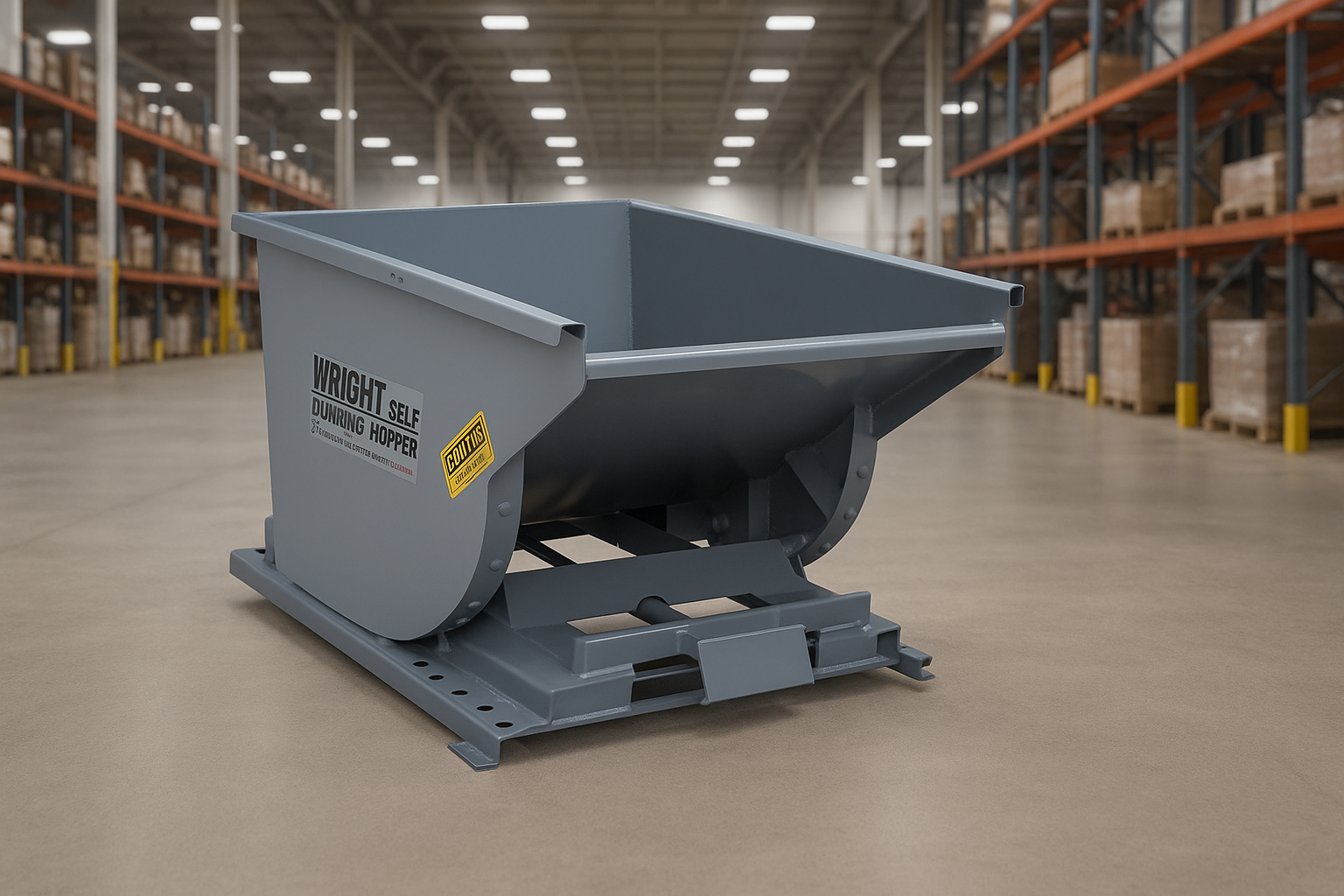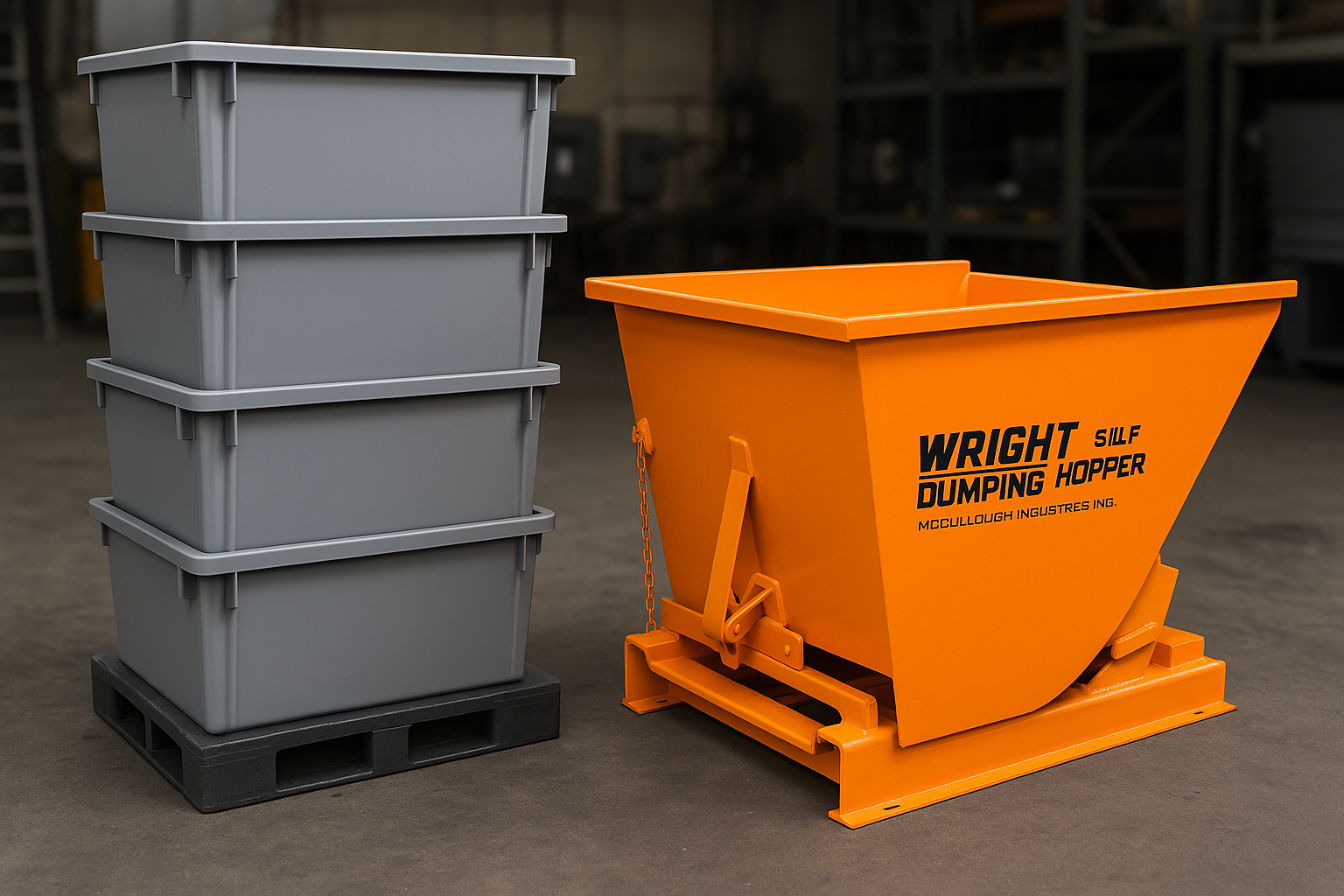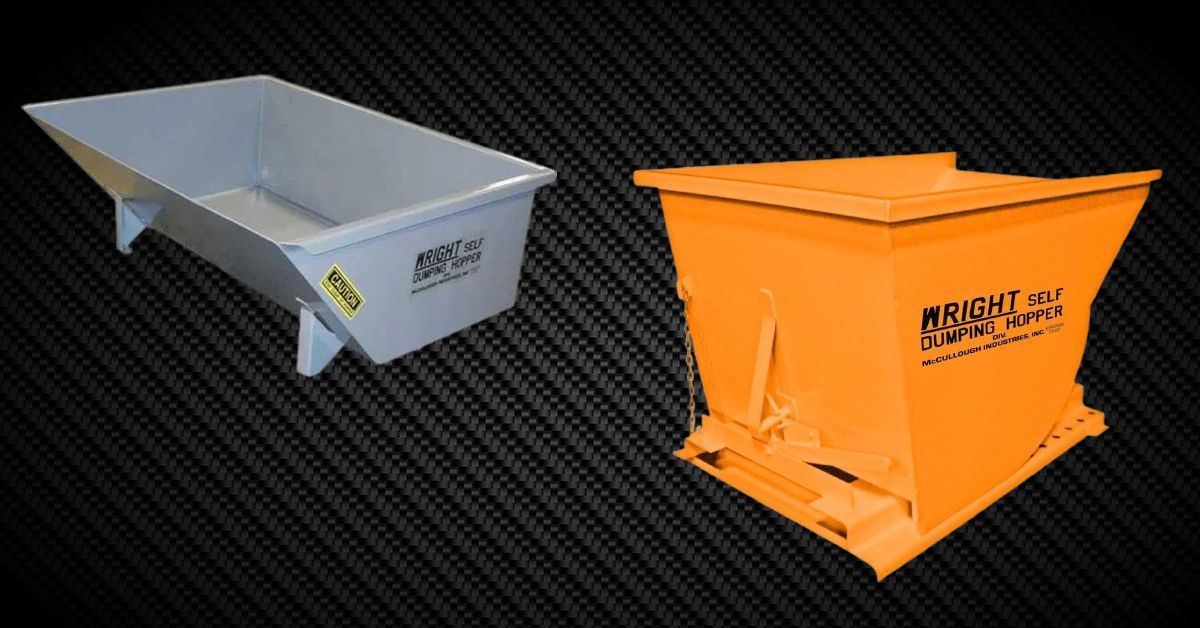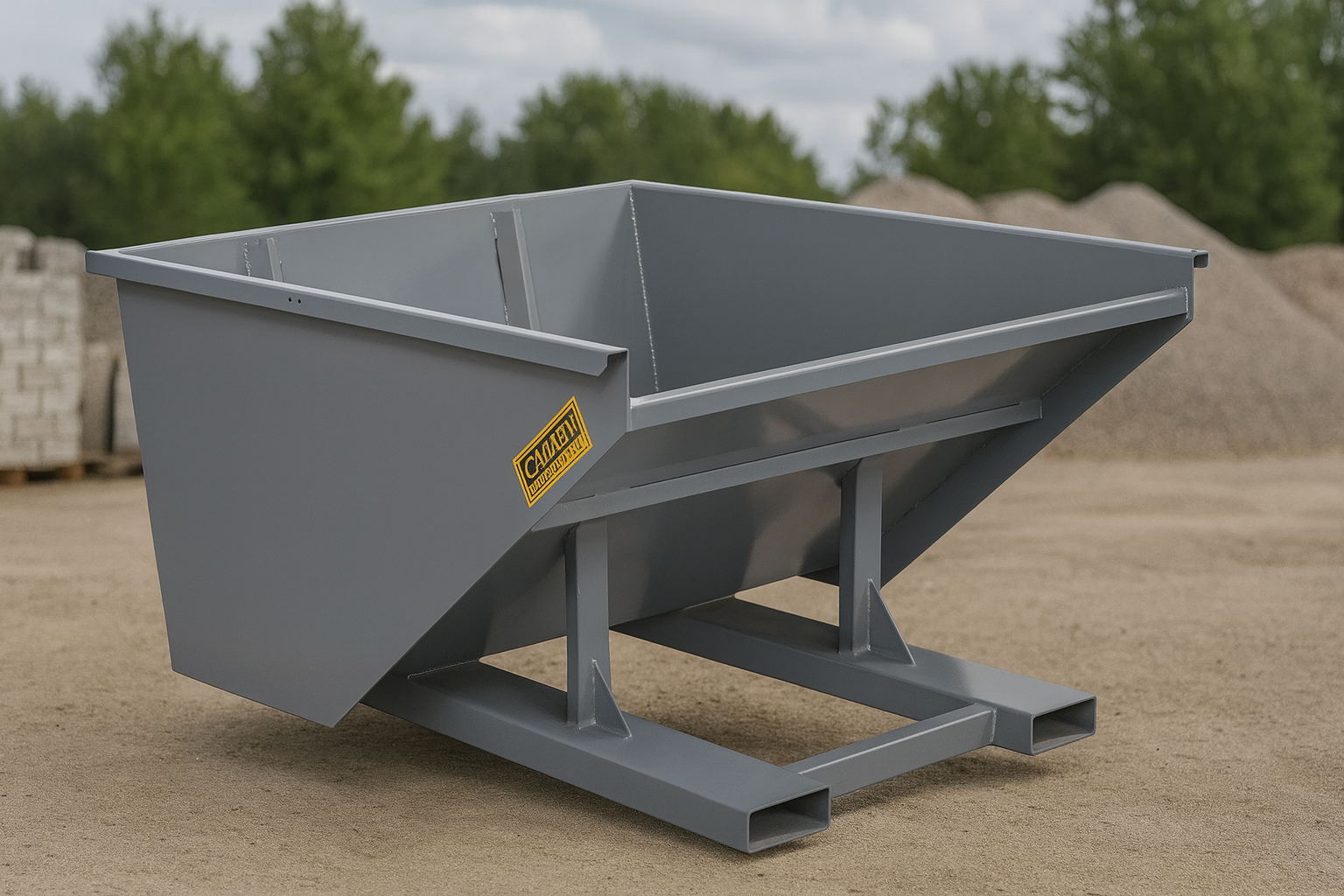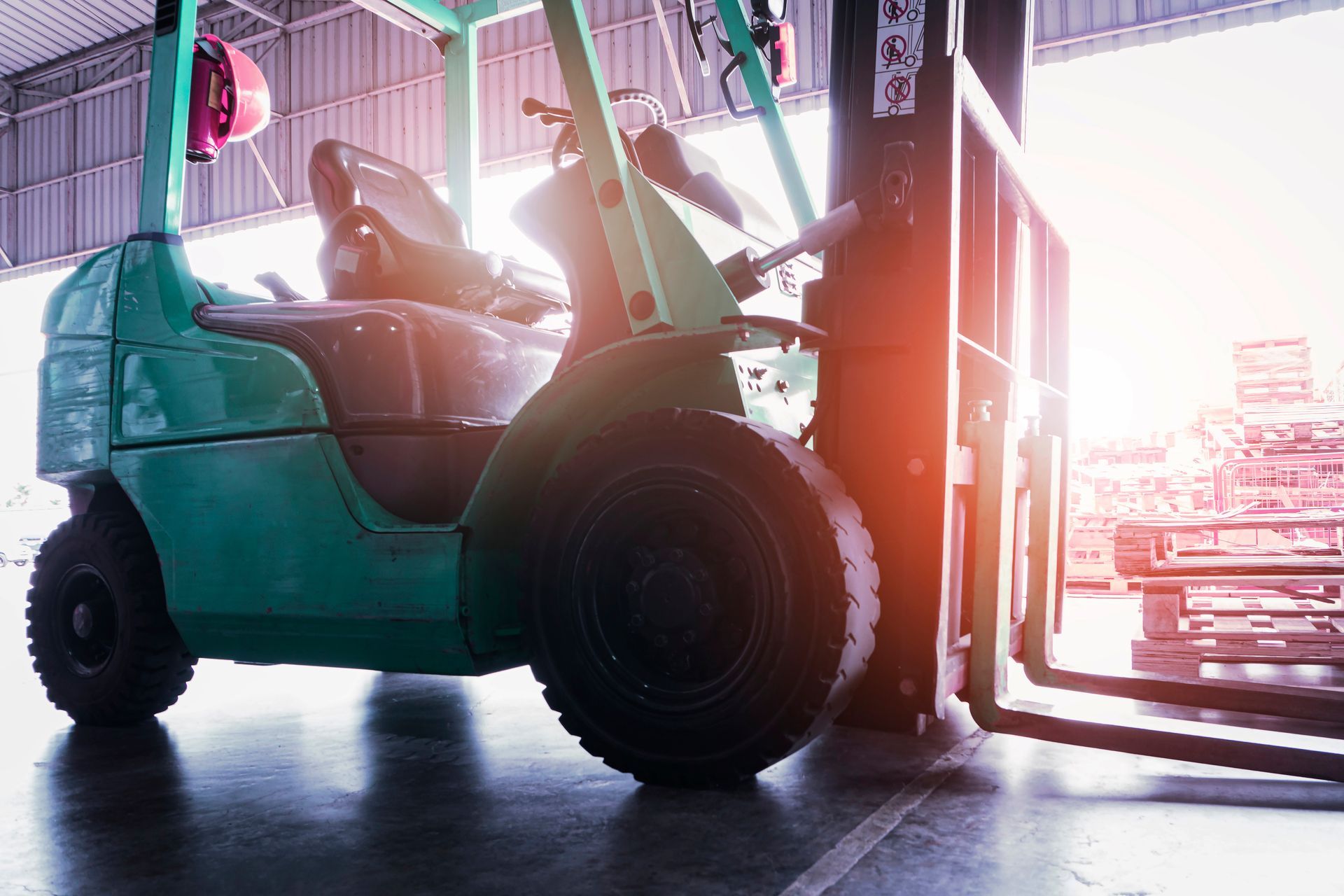
Understanding the Connection Between Forklifts and Scrap Hoppers
Choosing the right scrap hopper isn't just about capacity or gauge thickness. For forklift operated environments, it's about seamless integration with your existing fleet. At McCullough Industries, our Wright® Self-Dumping Hoppers are purpose built to meet the needs of material handling teams who rely on forklifts every day. Whether you're in manufacturing, fabrication, recycling, or distribution, selecting the wrong hopper can slow down workflows, increase safety risks, or even damage equipment.
This guide explains how to match a scrap hopper to your forklift fleet, covering compatibility, safety features, and operational efficiency. It’s written for shop managers, warehouse coordinators, and industrial buyers who want equipment that works hard and works smart.
Why Forklift Compatibility Matters
Forklifts are designed to move heavy materials quickly, but their performance is limited by what they can lift, secure, and dump safely. The wrong hopper can unbalance the forklift, make visibility difficult, or create drop hazards. McCullough hoppers avoid these problems through:
- Standardized fork pocket sizing
- Optimized center of gravity for full and empty loads
- Reinforced fork tubes and rocker stops
- Self-dumping and auto-reset systems to reduce operator involvement
Key Hopper Selection Factors for Forklift Operations
1. Fork Pocket Dimensions and Fit
The most common issue in forklift-hopper compatibility is improper fork pocket sizing. All Wright® hoppers are manufactured with 3" wide by 7.5" high fork openings, suitable for standard industrial forklifts. Always verify your forklift's tine size and spacing to ensure a snug, safe fit.
2. Load Capacity vs Forklift Rating
A hopper's weight capacity should never exceed your forklift's lift rating. For example, a GEN II 1.5-yard hopper rated for 6,000 lbs is not suitable for a forklift with a 4,000 lb lifting capacity. Choose the hopper that maximizes material movement without compromising safety.
3. Dump Height and Clearance
Low-profile hoppers are ideal when overhead space is limited or when dumping into shallow bins. High-capacity GEN II models require more clearance but offer superior volume and weight support. Select based on the height of your target containers and forklift lift range.
4. Automatic Dump and Reset Mechanisms
Our hoppers self-dump when tripped by the operator, and automatically return to a locked position once emptied. This reduces the need for manual resetting and minimizes time spent dismounting the forklift, improving both productivity and safety.
5. Mobility and Casters
While forklifts handle most movement, some facilities benefit from casters for repositioning when not fork-mounted. Choose models with optional poly or steel casters rated for your weight class.
Forklift Compatible Hopper Models from McCullough
| Model | Capacity | Fork Pocket Size | Weight Limit | Recommended Forklift Capacity |
|---|---|---|---|---|
| 10077 | 1.0 yd³ | 3" x 7.5" | 6,000 lbs | 6,000+ lbs lift |
| 15099 | 1.5 yd³ | 3" x 7.5" | Up to 3 high | Rotator frame |
| SRT-75 | 0.75 yd³ | 3" x 7.5" | Up to 2 high | Rotator frame |
| SRT-100 | 1.0 yd³ | 3" x 7.5" | Single stack only | Rotator frame |
Selecting the Right Hopper Style for Your Workflow
- GEN II Self-Dumping Hoppers: Best for general material handling, available in heavy-duty builds and multiple volumes.
- Low Profile Hoppers: Designed for clearance-sensitive areas. Easily fits under workstations or conveyors.
- Bump Release Hoppers: Auto-dump when contacting roll-off bins. Great for fast, repetitive dump cycles.
- Stackable Rotating Totes (SRTs): Forklift-safe and stackable when not in use, ideal for lean operations.
Safety Tips for Forklift + Hopper Operation
- Always lock forks into place with safety chains or fork locking devices
- Avoid exceeding the rated capacity of both hopper and forklift
- Ensure load is balanced before lifting
- Never use a damaged hopper inspect regularly for weld or frame wear
- Dump only on stable, flat surfaces
Common Use Cases
McCullough's forklift-compatible hoppers are used across:
- Fabrication facilities handling scrap metal and offcuts
- Machine shops disposing of wet chips and oily shavings
- Warehouses managing cardboard, packaging, and returns
- Recycling centers collecting plastics, wood, or non-ferrous metals
- Industrial plants moving raw or finished materials between work zones
Why Choose Wright® Stackable Dump Hoppers
At McCullough Industries, our hoppers are not modified from existing products they’re engineered from the ground up to meet industrial material handling needs. That means:
- All-steel welded construction
- Designed, fabricated, and finished in Ohio
- OSHA-focused dump angles and safety options
- Direct support from the engineers who built your hopper
When you order from McCullough, you’re not picking off a shelf. You’re investing in a lasting solution for space, safety, and scrap control.
FAQs About Forklift Scrap Hoppers
How do I know if my forklift is compatible with a Wright® hopper?
Check your fork tine dimensions and weight rating. All MCI hoppers are designed for standard 3" x 7.5" fork openings. Match the hopper’s weight capacity to your forklift’s lift limit.
Can I move the hopper by hand?
Some smaller hoppers (0.25–0.5 yd³) with casters can be moved short distances manually, but for full hoppers, a forklift is recommended.
Do hoppers dump automatically?
Yes. Wright® hoppers use a self-dumping design activated by a simple trip mechanism. After dumping, they return to a locked position automatically.
Can I use a quick attach system instead of forks?
Yes. McCullough also offers Quick Attach Hoppers compatible with loader-style tach plates. Let us know your system, and we’ll match the right configuration.
What hopper size is best for recycling operations?
We typically recommend 1.5 to 2.0 yd³ models for recycling centers, depending on the weight and type of material.
Conclusion: Let’s Match Your Hopper to Your Forklift
A great hopper improves safety, speeds up workflow, and protects your team and equipment. McCullough Industries builds Wright® Self-Dumping Hoppers specifically for forklift-driven operations across the industrial spectrum. Let us help you choose the right size, configuration, and accessories to make every dump cycle safer and more efficient.

